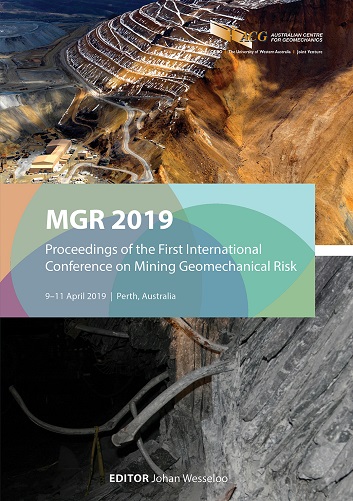Key considerations when developing a risk management framework for tailings facilities

|
Authors: Gagnon, AG |
DOI https://doi.org/10.36487/ACG_rep/1905_16_Gagnon
Cite As:
Gagnon, AG 2019, 'Key considerations when developing a risk management framework for tailings facilities', in J Wesseloo (ed.), MGR 2019: Proceedings of the First International Conference on Mining Geomechanical Risk, Australian Centre for Geomechanics, Perth, pp. 291-298, https://doi.org/10.36487/ACG_rep/1905_16_Gagnon
Abstract:
Risk management is a key component of any effective corporate tailings governance framework. Uncertainty is inherent to a mining company's business activities and may present both risk and opportunity. An integrated risk-based approach assists management in identifying, evaluating, prioritising and managing key risks to the achievement of the mining company's strategic objectives, as well as opportunities to enhance performance and value. Corporate risk management frameworks are typically designed to manage risks at the enterprise or operational level with specific definitions for consequence and likelihood. Challenges can develop in accurately ranking tailings-related risks when utilising an operational-level corporate risk management framework. This paper highlights various corporate risk management approaches and discusses some key considerations when developing a tailings risk management framework and governance model.
Keywords: risk management, tailings, governance, framework, corporate strategy
References:
CDA 2013, Dam Safety Guidelines 2007 (Revised 2013), Canadian Dams Association, Toronto.
COSO 2017, Enterprise Risk Management - Integrating with Strategy and Performance, Committee of Sponsoring Organizations of the Treadway Commission, viewed 1 March 2019,
Davies, M & Dumaresq, C 2018, Mining Association of Canada’s Guidance on Tailings Management, presented at Tailings and Mine Waste 2018, Keystone.
Environmental Agency 2011, Modes of Dam Failure and Monitoring and Measuring Techniques, Flood and Coastal Erosion Risk Management Research and Development Program Project SC080048/R1, Environment Agency, Bristol, viewed 1 March 2019, , p. 15–73.
Federal Emergency Management Agency 2016, Pocket Safety Guide for Dams and Impoundments, Federal Emergency Management Agency, Washington, p. 80.
Federal Energy Regulatory Commission 2018, ‘Dam safety performance monitoring program’, Engineering Guidelines for the Evaluation of Hydropower Projects, US Federal Energy Regulatory Commission, Washington, p. 188.
International Commission on Large Dams 2011, ICOLD Bulletin 139: Improving Tailings Dam Safety – Critical Aspects of Management, Design, Operation and Closure, vol. 24, issue 1, p. 42.
Kaplan, RS & Miles, A 2016, Risk Management – the Revealing Hand, Working Paper 16-102, Harvard Business School,
Mark, K 2011, An Overview of Risk and Risk Management, Richard Ivey School of Business, London.
McKenna, GT 2002, Landscape Engineering and Sustainable Mine Reclamation, PhD thesis, University of Alberta, Edmonton.
Passenheim, O 2010, Enterprise Risk Management, Ventus Publishing ApS, Frederiksberg.
Stulz, R 2008, ‘Risk management failures: what are they and how do they happen?’, Journal of Applied Corporate Finance, vol. 20, no. 4, pp. 39–49.
Whitman, RV 1984, ‘Evaluating calculated risk in geotechnical engineering’, Journal of Geotechnical Engineering, vol. 110, issue 2, pp. 143–188.
Vick, SG 2017, Risk Analysis: How Did We Get Here and Where Are We Going?, presented at 2017 Alberta Dam Safety Seminar, viewed
© Copyright 2025, Australian Centre for Geomechanics (ACG), The University of Western Australia. All rights reserved.
View copyright/legal information
Please direct any queries or error reports to repository-acg@uwa.edu.au
View copyright/legal information
Please direct any queries or error reports to repository-acg@uwa.edu.au
